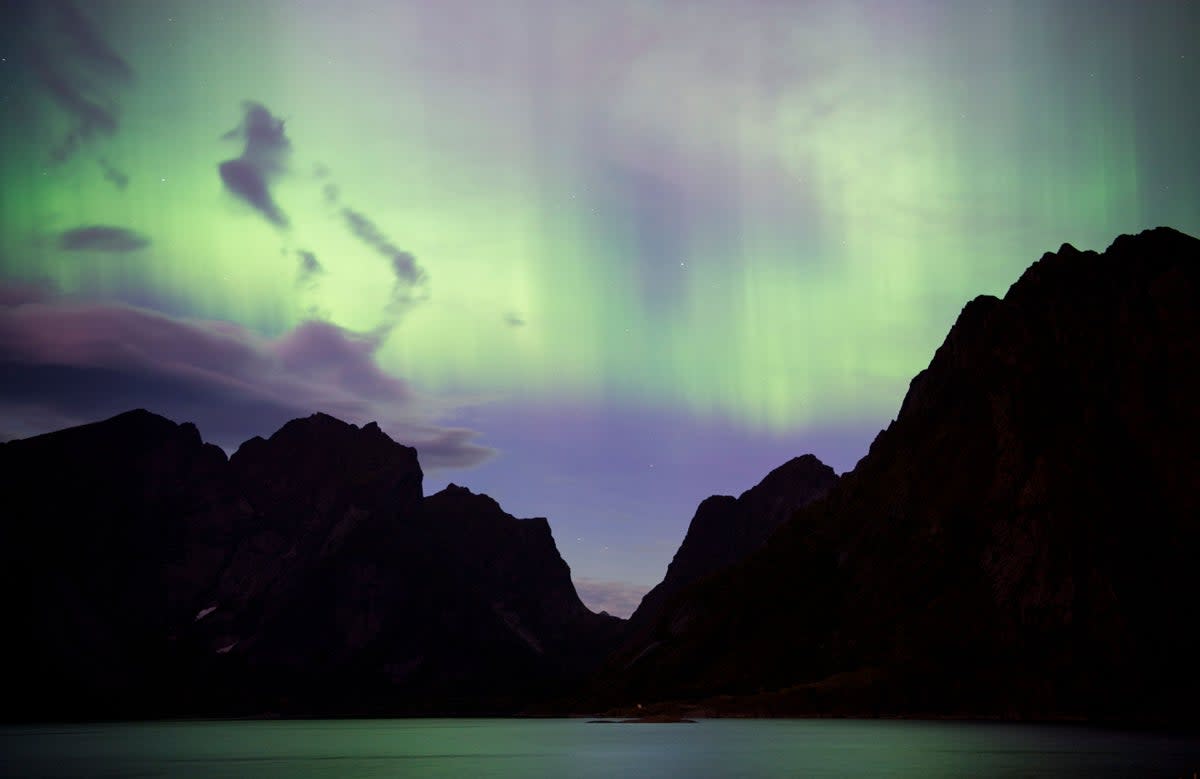Auroras cloak the Earth as machine gun solar storms strike planet

Aurora has been spotted across the planet as a series of solar storms strike the Earth.
Photos of the Nothern Lights have been taken in Scotland, as well as the north of England in Northumberland and are expected in Wales.
Absolutely SPECTACULAR aurora today!!! Thankful for the recent solar activity resulting in these wonderful sights! pic.twitter.com/aOD45XSWaX
— Bob “Farmer” Hines (@Astro_FarmerBob) August 18, 2022
The lights, which are caused by geomagnetic activity from the Sun, have been exacerbated by ‘cannibal’ solar storms headed for Earth.
In recent days, the Sun experienced two coronal mass ejections, or CMEs, during which particles burst out of its surface. These CMEs could cannibalise each other so that they become one even more powerful blast.
As well as these, a series of three other storms is expected to hit the planet – having started on the 18th and set to continue over the weekend.
“The first in a succession of SIX solar storms is hitting Earth now! NASA/CCMC’s Mary Aronne got this run spot on”, space weather physicist Dr
Tamitha Skov tweeted.
“NOAA/SWPC has the other five hitting in machine-gun fashion starting on the 18th. Magnetic field is northward thus far but expect aurora to build soon!”
She added: “Expect sporadic aurora down to mid-latitudes through August 20. Disruptions to amateur radio expected on Earth’s nightside. GPS reception issues at dawn, dusk & near aurora”.
The next FIVE machine-gun #solarstorms to hit begins on the 18th according to NOAA/SWPC predictions. Expect sporadic #aurora down to mid-latitudes through August 20. Disruptions to amateur #radio expected on Earth's nightside. #GPS reception issues at dawn, dusk & near aurora. https://t.co/xaUUVZcBrG pic.twitter.com/34Z0cl5SAZ
— Dr. Tamitha Skov (@TamithaSkov) August 17, 2022
It is expected that the solar storms which will hit the planet will be categorised as a G3 class storm, which is described as a “strong” storm. Such events are categorised in a scale running from G1 to G5, with the latter including widespread power system problems and communication shutdowns.
The Sun remains in a particularly active period, with watchers suggesting that the next few days could bring “High” levels of solar activity.
While solar flares are difficult to predict – and can cause huge damage to electrical infrastructure in worst-case scenarios – scientists believe they can now foresee when they will occur.
The maximal growth rate of sunspot activity is a precursor to how powerful the cycle might be and are more accurate when the two hemispheres of the Sun are considered separately, rather than collectively.


